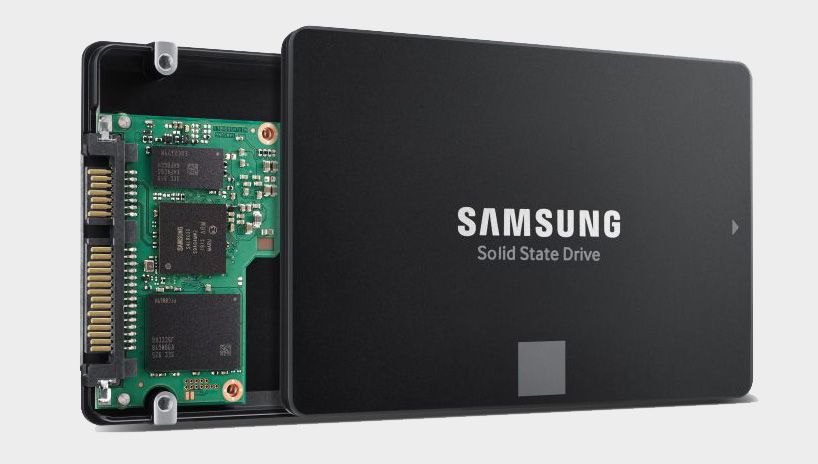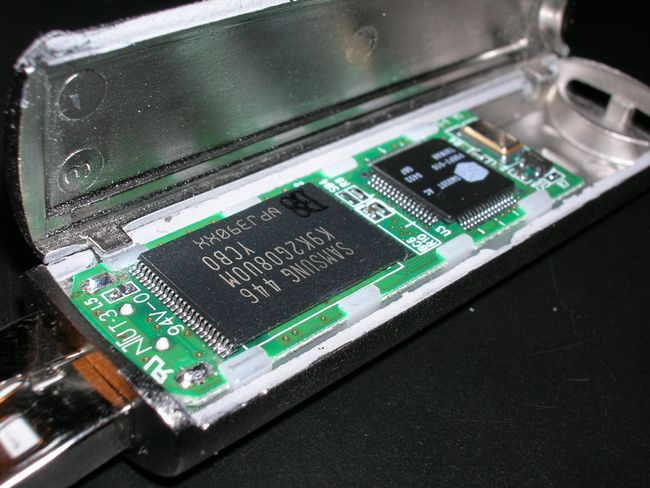Flash storage VS SSD storage
The technologies are related, but it’s like comparing eggs to an omelet.

PC hardware terms are often used interchangeably, get their abbreviations cut down, or have multiple words for the same component. Take DRAM/RAM/memory, for example. Those three words all reference the same PC component that gets installed into the skinny slots next to the CPU socket—random access memory. We call CPUs processors, GPUs graphics cards, motherboards mobos—the list goes on.
Flash storage and SSD are two terms that are sometimes used interchangeably, too. But when you break each one down into detail, there are several key differences that set them apart from one another. DRAM/RAM/memory, flash and SSD are not referring to the same thing. Even though flash memory is used in SSDs and flash storage can be considered an SSD. But using an analogy that gets used a lot when talking about the differences between the two, think of one as the eggs and the other as the omelette.
What is Flash Storage?

Flash storage (or flash memory) is the ‘eggs’ parts of the analogy. Most SSDs (solid state drives) are made mostly of flash memory, like an omelet is made mostly of eggs, but flash memory can be used in lots of other ways.
Let’s start with the similarities between flash and SSD storage. Both are faster than HDDs and do not have moving parts like HDDs. Both are also forms of non-volatile memory. So they retain any information saved to them even after you shut down your computer (unlike RAM, which only temporarily stores information). and flash and SSD storage are easily rewriteable. So, if you are constantly uninstalling and reinstalling games or downloading every new Sims 4 game pack that comes out, these two types of memory have you covered.
Flash which can be used in many components in addition to SSDs: phones, digital cameras, calculators, USB drives (also called flash drives). It used to be super expensive, but as storage capacities have increased, prices have decreased. A 4GB USB flash drive cost around $65 in 2006, while a 128GB flash drive costs around $25 today. Cheaper flash memory means cheaper SSDs, too.
However, the flash memory in flash drives is often much slower than the flash used in SSDs. Plus, there’s less of it, with a far more simplistic controller.
What is SSD Storage?

SSD storage is the omelet part of the recipe, and it’s probably your primary storage device in your PC or laptop. HDDs as primary storage are pretty much dead, but still make a great, secondary storage solution.
However, while most SSDs do use flash memory, not all SSDs do. SSD is just a way of differentiating a storage solution that is designed with moving parts. Any type of storage that doesn’t move is an SSD, but while flash memory can technically be considered a type of solid state drive. It’s more accurate to differentiate it from an actual SSD like the Samsung 970 EVO because flash memory is just an ingredient, not the recipe. Flash is the storage medium for an SSD.
In fact, the earliest SSDs did not use flash storage, but something called EAROM (electrically erasable read only memory). An early type of non-volatile memory that had read/write capabilities, but processed data very slowly. Flash-based SSDs didn’t hit the market until the 90s, and they were prohibitively expensive—$1,000 or more compared to $100 today.
Some manufactures, like Intel, have created an alternative to flash, too. Intel’s Optane SSDs utilize a different technology called 3D Xpoint. You can read more about it here.
SSDs have high-speed controllers designed to read and write data at speeds of up to 5GB/s (and 7GB/s models are coming). They do this by reading or writing to multiple flash chips at the same time. Eight channels, each doing 500MB/s of data transfers, gives 4GB/s of potential performance.
The fastest SSDs also have DRAM caches to help store commonly accessed data. A 1TB SSD for example might have a 256MB DRAM cache that holds the mapping tables. Flash memory can be fast, but DRAM is even faster. Plus DRAM doesn’t eventually wear out.




